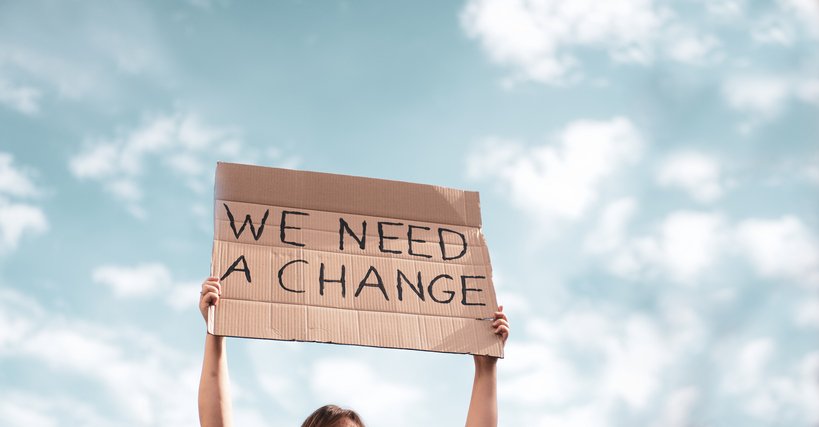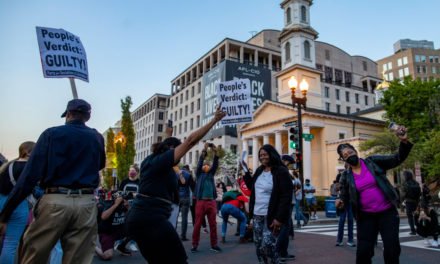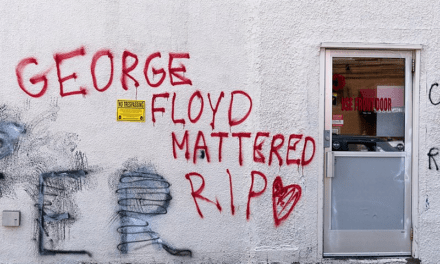
With all the polarization in our country these days, this past 4th of July holiday certainly had the potential to be a somber one. Considering the Supreme Court’s recent decision to overturn Roe v. Wade and almost 50 years of precedent outlawing forced pregnancy that The Winters Group COO Mareisha N. Reese wrote about last week, one can only imagine where the court’s conservative majority will take America next, with decisions impacting LGBTQIA+ rights, affirmative action, and enforcement of the Voting Rights Act all hanging in the balance in just the next year.
Thinking in terms of the long view, I say we each have something important to contribute in the fight for justice and must fend off despair when the scales tip the other way. Given that the oldest conservative judges, Samuel Alito and Clarence Thomas, are only in their early to mid 70s and that a recent simulation by The Washington Post projects conservative control of the Supreme Court for at least another three decades, we cannot pin our hopes on a progressive majority anytime soon. If we want to see justice, we must accept that we can’t achieve it alone and must practice standing up for it within our own spheres of influence. In many instances, we may be laying the groundwork so that future generations can continue to build on our work.
If we want to see justice, we can’t achieve it alone, and we must practice standing up for it within our own spheres of influence. We lay the groundwork so that future generations can continue to build on our work. Share on XIn my personal life, this has manifested in taking action at my son’s predominantly white school. While my son is only 2 and enrolled in a preschool program, the school itself goes up through 8th grade and has a small handful of parents who are concerned about critical race theory (CRT). This past year, those very parents made sure their voices were heard when they became unsettled about the 4th grade in-class study of Uncomfortable Conversations with a Black Boy by Emmanuel Acho, which covers the author’s experiences with racism as a student at majority-white prep schools and as a former linebacker on majority-Black NFL football teams. According to the school administration, these concerns “quickly went up the food chain” and became such a distraction that the school decided to discontinue the in-class reading of the book and instead made it optional for at-home study.
As someone who has spent 45 years learning and unlearning the internalized racism that can result from growing up in predominantly white neighborhoods and attending predominantly white schools (and who has worked to make organizations more equitable through justice-centered hiring practices and leadership education), I was immediately triggered to take action. The fact that a small number of people with access to power can send the message to my multiracial son and other children of color that the comfort of white and privileged folks is more important than collectively learning about the lived experiences of a young Black boy who deals with racism every day does not sit well with me. Nor should it, given that research has shown that babies as young as 3 months can detect racial differences and begin to demonstrate evidence of racial bias. According to the American Psychological Association, children at age 4 associate being white with having higher status and wealth, with race-based discrimination already a problem by the time they start kindergarten.
In her post “The Truth About Critical Race Theory,” The Winters Group Founder and CEO Mary-Frances Winters notes, “Any attempt to acknowledge our nation’s history of racism in any way has historically been deemed unpatriotic and anti-American. CRT is the latest scapegoat.” In fact, Diversity, Equity, Inclusion, and Justice Intern Mahlik Good recently lifted up this timely ProPublica article about what happens when anti-CRT groups get out of hand, an occurrence that we must prepare for given the proliferation of anti-CRT legislation that has been proposed in more than 40 states.
The Winters Group Founder and CEO Mary-Frances Winters notes, 'Any attempt to acknowledge our nation’s history of racism has historically been deemed unpatriotic and anti-American.' Share on XIn my case, my first step was an appeal to my peers — the fellow parents with whom I spent the past year organizing play dates, celebrating class birthdays, getting to know at school events, and raising funds to support our community. Learning and Innovation Manager Leigh Morrison reminded me of the power of coalition building and was a true thought partner in helping me choose a level of transparency that felt comfortable. Having engaged with many internal processors who benefited from being included in open discussions in my previous career as a special education teacher, I decided along with my husband to copy all of the other class parents on an email detailing how we were personally impacted by the school’s decision. Since one of the parents I had recently spoken with about the book mentioned that she was considering writing to the principal to express her disappointment, I wanted to make sure that she and others felt encouraged to do so, which is why we intentionally ended our letter with an invitation to voice concerns with the administration and to share more information to keep the dialogue going.
The first response came from a parent who was sympathetic to the concerns related to the questions being asked in the book’s study guide. In the spirit of keeping an open dialogue going, I thanked her for the additional context and responded with curiosity: What wording caused concern? Could someone share a copy of the guide? Does anyone know if any people of color were involved in the decision-making process? While only one of the three questions was answered (the group received a copy of the study guide), it at least kept the dialogue going. Two other parents chimed in with their observations, concerns, and additional questions, which I then incorporated into my meeting with the school.
When I spoke to the school to find out if any people of color were involved in the decision-making process around removing Emmanual Acho’s book from the curriculum, the frank answer was “not enough.” I also learned that creating a strategic plan to hire more people of color at the school or recruit more diverse board members would be seen as “moving too fast” and “might scare people,” which the administration felt could potentially throw off the school’s progress with its DEI initiatives. While I could have left that conversation stewing in prolonged states of feeling invalidated, angry, and depleted — all of which I definitely felt — applying a variation of radical acceptance championed by VP of Strategy and Assessments Kevin Carter allowed me to take in the information, accept it, and use it to form my next steps to advocate for a parent committee on DEI. If the school wasn’t ready to move the needle on proactively recruiting people of color, a parent committee could at least provide a platform for BIPOC families to get involved on a voluntary basis and offer insight from their lived experiences so that those most impacted by racism can be part of the conversation next time there are concerns about CRT.
While the majority of the other parents were silent when we first reached out about our concerns, over the next few weeks it became clear that many of them were reading and thinking about the exchanges, as a number of them came up to thank me for speaking up and made pledges to voice their support. This is precisely the type of engagement I was used to with the internal processors I formerly taught — most of them wouldn’t say much in a group, but once I was able to talk with them one-on-one, I found that they had lots of thoughts on what they read and heard in class. To me, this is more evidence of why we shouldn’t lose hope even when it feels like progress isn’t being made: sometimes change is invisible from our vantage point, yet it manages to take place as long as we create opportunities and continue planting seeds. For now, I am motivated to meet the school where it is because the majority of the community members I interact with have expressed support for the school’s DEI efforts and would like to see more done.
We shouldn’t lose hope even when it feels like progress isn’t being made. Sometimes change is invisible from our vantage point, yet it takes place as long as we create opportunities and plant seeds. Share on XIn the meantime, I plan to check out and share the wonderful ideas and resources for finding diverse children’s books lifted up by Diversity, Equity, Inclusion, and Justice Intern Jevan Sandhu and Equity Audit and Strategy Manager Thamara Subramanian. How about you? What steps are you taking to champion justice in your sphere of influence? Who is in your support network and how are you rallying others to join you? Our collective action to spur each other on is needed now more than ever.
What steps are you taking to champion justice in your sphere of influence? Who is in your support network and how are you rallying others to join you? Share on X

















